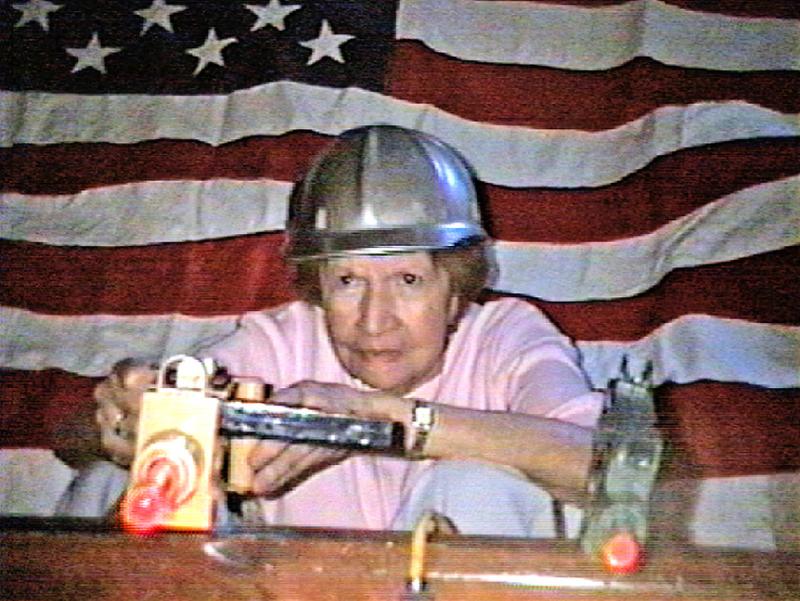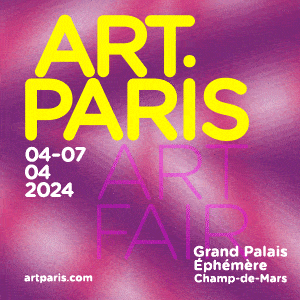Whitehot Magazine
May 2024
"The Best Art In The World"
"The Best Art In The World"
May 2024
Summer 07, WM Issue #4: BRYAN ZANISNIK: studio visit

BRYAN ZANISNIK: studio visit
By Yaelle Amir
Bryan Zanisnik has been creating videos for more than half of his lifetime. At the age of 13 he shot eight hours worth of video footage with his grandmother, tackling provocative issues such as WWII, the Vietnam War, and immigration, with the candidness and unadulterated wit of a child. Two years later, he packed the videos up in a box and shelved them in his parents’ basement. Twelve years went by before he recalled making them, and went to retrieve them from the depths of his childhood home.
Having come from a Modernist, academic background, Zanisnik’s initial response upon viewing the videos was that he needed to “turn them into art:” “I think that even before I got to the point I am at right now (with my work), I would have thought it is forbidden to show these videos ‘as is,’ because it is not ‘art.’ I grew up reading James Joyce, and being very ‘academic,’ so, to find something so childish and naïve did not fit with my idea of what art is.”
He tried to manipulate the footage by creating overlays, loops, and voiceovers—but it failed to capture what he believed to be the essence of the project. It was only after he presented the videos in his graduate Crit class that he recognized what he needed to accomplish: “I realized that what was most strong about the footage was the purity of it—the fact that they were made when I was 13 and they are not so conscious at all. I was not trying to make art, it was a game. It was pure. I realized that anything I would add to the videos would be a layer, a complexity, a mask. It would be hiding its strongest elements.”
This revelation led him to assume the role of an editor, and approach the footage as an archive. The resulting work, 80 Year War, is comprised of five videos (each approximately six minutes long) and a series of manipulated photographs culled from the film. Each video displays a different narrative—a war re-enactment, an immigration plot, a gangster takeoff on a Tarantino film, a mob story, and a script in which his dad plays a critic and his grandmother is an aspiring dancer, who ultimately murders him from rage.
Despite its exaggerated qualities, this work provides an entryway to a discussion on larger socio-political issues that remain crucial today. For instance, the fact that the war re-enactment video was made in 1991, while operation Desert Storm was underway in , raises the matter of the cyclical nature of history as we currently find ourselves in the midst of the same predicament. Zanisnik employs humor as a means to transform heavy-handed and uncomfortable topics into digestible materials. Thus, the political aspect of his oeuvre, however masked, is its underlying driving force: “I am very much conscious of the visual noise that surrounds us, and I do not want to merely contribute to that culture. I want to address issues that are going on now. Although I do not believe art has the ability to change political agendas, I think it is quite successful in creating a public dialogue.”
His recent work, Inner Space, is another example of this method—the narrative of this quirky video unfolds on a spaceship, which Zanisnik situated in his suburban childhood home in New Jersey. The astronauts (played by his parents) only communicate with their commander (Zanisnik himself) through a TV box—an element that is introduced as both a structural device, as well as a reflection on family dynamics and the prevalence of mediated communication.
This work also conveys the resonant effect the making of 80 Year War has had on him: “I approached this project very differently after having worked with the footage of my grandmother. There is more of a directness and purity to this work, than there might have been had I not worked with that footage. There is a conscious humanist aspect to it, vulnerability. At the same time, there are some complexities, both technical and narrative-wise, that were not in place in the project with my grandma—only because that had already been shot, and I had to work with an archive.”
Both projects have a photographic component, which Zanisnik considers to be a body of work unto itself. While he was pulling frames from the 80 Year War videos to create the photographs, he realized that they are less about the narrative, and more about memory and capturing a moment from the past. He therefore manipulated the stills by adding a layer of grain and texture in Photoshop, so as to make them appear as if they are disintegrating and fading away like a memory. The photographs of Inner Space are of a somewhat different nature, since they were not taken directly from the video. Instead, Zanisnik used a medium format camera to capture images that relate to the narrative of the video, but are not actually present in the work itself. The resulting images are very sharp and poppy, and display relationships between clashing patterns, graphical elements, and dramatic lighting.
Zanisnik is currently working on a project that is taking him back to his family roots in the Ukraine. This summer, he will be traveling to the country in order to research and verify the details of an inter-generational fable within his family: “At around the turn of the century, while the tsar and his entourage were traveling through the country, his kids went to play off a field adjacent to my great grandfather’s farm. At some point, a wolf cornered the kids and was about to attack them, but my great-grandfather ran over, tackled the wolf, shot and killed it. The kids ran back to the tsar and said to him: ‘we were almost killed by a wolf and a farmer saved out life!’ The tsar replied: ‘take me to this man.’ He went to Grandpa Zanisnik, a very poor farmer, and invited him to leave his peasant life to become part of his royal guard that travels with him all around the Ukraine. My great-grandfather did indeed join him, and stayed with him until the Russian revolution broke out and the tsar was abdicated.” Zanisnik identifies this personal story as a metaphor for the social state of theUkraine today, since it is in essence about class distinction and patronage. In the resulting work, he aims to reflect both his own heritage, as well as the country’s persistent economic struggle.
As we probe beneath the witty surface of his works, multiple layers of Zanisnik’s reflections on both his personal life and surrounding culture are uncovered. The unadulterated nature and sincerity of the works eases us into a crucial and much-needed discourse on current concerns. By employing components of his personal history like his childhood bedroom or feisty grandmother, he ultimately illuminates the disconcerting nature of our immediate national predicament.
Bio: Bryan Zanisnik was born and raised in New Jersey, and currently lives and works in Brooklyn. He holds a BA in Art History from Drew University, NJ, and is an MFA Candidate in Combined Media at Hunter College, NY. He has shown his work at diverse institutions, including The Jersey City Museum, the Museum of Fine Arts at Florida State University, and Exit Art, NY. Most recently, he participated in First Look II at the Hudson Valley Center for Contemporary Art in Peekskill, NY. This summer, he will be taking part in the prestigious Art Omi residency.
For more information, please visit www.zanisnik.com

Yaelle Amir
Yaelle Amir is a writer in New York
yaelle_amir@hotmail.com












